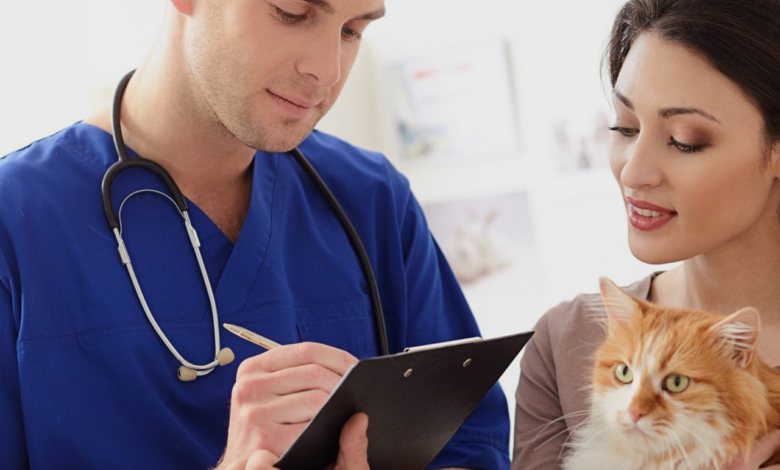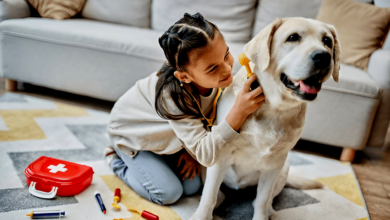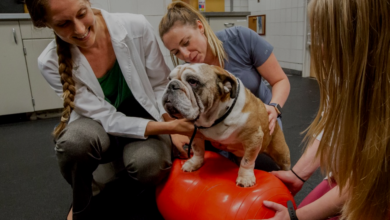
Emergency Vet Visits: When to Rush and When to Wait
Learn when to seek emergency vet visits care for your pet and when to monitor at home. Essential guide for pet owners.
Pets are cherished members of our families, and their health and well-being are a top priority for pet owners. However, knowing when to rush to the vet visits and when to wait can be a challenging decision. Emergency vet can be stressful, time-consuming, and costly, but they are sometimes necessary to save a pet’s life. Understanding the difference between a true emergency and a situation that can wait until regular office hours is crucial for every pet owner. This article will provide a comprehensive guide to help you make informed decisions about your pet’s health, covering common emergencies, warning signs, and when it’s safe to monitor your pet at home.
In this guide, we’ll explore various scenarios that may require immediate veterinary attention, such as trauma, poisoning, difficulty breathing, and severe pain. We’ll also discuss situations where waiting might be appropriate, such as minor cuts, mild digestive issues, or behavioral changes. By the end of this article, you’ll have a clearer understanding of how to assess your pet’s condition and make the best decision for their health. Remember, when in doubt, it’s always better to err on the side of caution and consult your vet visits.
Recognizing True Emergencies
One of the most critical aspects of pet ownership is recognizing when your pet is experiencing a true emergency. Some situations require immediate vet visits intervention to prevent serious complications or even death. For example, if your pet has been hit by a car, suffered a fall, or experienced any other form of trauma, it’s essential to seek emergency care immediately. Even if your pet appears fine, internal injuries or bleeding may not be immediately visible.
Another situation that warrants an emergency vet visits is poisoning. Pets are naturally curious and may ingest toxic substances such as chocolate, grapes, certain plants, or household chemicals. Symptoms of poisoning can include vomiting, diarrhea, seizures, lethargy, or difficulty breathing. If you suspect your pet has ingested something toxic, don’t wait for symptoms to appear—contact your vet visits or an emergency animal poison control hotline right away.
Difficulty breathing is another red flag that requires immediate attention. Whether it’s due to an allergic reaction, choking, or a respiratory condition, labored breathing can quickly become life-threatening. Signs of respiratory distress include wheezing, coughing, blue-tinged gums, or excessive panting. In such cases, rushing to the vet visits is crucial to ensure your pet receives oxygen and other necessary treatments.
Severe pain is also a sign that your pet needs urgent care. Pets may exhibit pain through vocalization, restlessness, aggression, or changes in posture. Conditions such as bloating, fractures, or urinary blockages can cause intense discomfort and require immediate veterinary intervention. Ignoring signs of pain can lead to further complications and prolonged suffering for your pet.
When to Wait and Monitor at Home
While some situations demand immediate action, others can be monitored at home until you can schedule a regular vet visits. For example, minor cuts or scrapes that don’t involve heavy bleeding or deep wounds can often be treated with basic first aid. Clean the wound with mild soap and water, apply an antiseptic, and monitor for signs of infection, such as redness, swelling, or discharge. If the wound doesn’t improve or worsens, consult your vet visits.
Mild digestive issues, such as a single episode of vomiting or diarrhea, may not always require an emergency visit. Pets can sometimes experience upset stomachs due to dietary indiscretion or stress. However, if vomiting or diarrhea persists for more than 24 hours, is accompanied by lethargy, or contains blood, it’s time to seek vet visits care. Dehydration is a significant concern with prolonged digestive issues, so keep an eye on your pet’s hydration levels.
Behavioral changes, such as increased lethargy or reduced appetite, can be concerning but don’t always indicate an emergency. These symptoms may be caused by stress, minor illnesses, or changes in routine. However, if your pet’s behavior changes are severe or accompanied by other symptoms like vomiting, diarrhea, or difficulty breathing, it’s best to consult your vet visits.
Common Pet Emergencies and How to Handle Them
Choking: If your pet is choking, they may paw at their mouth, cough, or struggle to breathe. Carefully open their mouth and check for any visible obstructions. If you can safely remove the object, do so. If not, rush to the vet visits immediately. Avoid sticking your fingers deep into their throat, as this can cause further harm.
Seizures: Seizures can be terrifying to witness, but it’s essential to stay calm. Keep your pet away from furniture or objects that could injure them. Time the seizure and note any unusual behaviors. If the seizure lasts more than a few minutes or occurs repeatedly, seek emergency care.
Heatstroke: Pets can quickly overheat, especially in hot weather. Signs of heatstroke include excessive panting, drooling, vomiting, and collapse. Move your pet to a cool area, offer water, and use cool (not cold) compresses to lower their body temperature. Seek vet visits care immediately, as heatstroke can be fatal.
Eye Injuries: Eye injuries, such as scratches or foreign objects, can cause pain and vision problems. Avoid touching or applying pressure to the eye. Rinse the eye gently with saline solution if possible, and seek veterinary care promptly.
Allergic Reactions: Allergic reactions can range from mild to severe. Symptoms may include swelling, hives, itching, or difficulty breathing. Mild reactions can often be managed with antihistamines, but severe reactions (anaphylaxis) require immediate vet visits attention.
The Role of Preventive Care
While emergencies can happen unexpectedly, preventive care plays a crucial role in keeping your pet healthy and reducing the risk of serious health issues. Regular veterinary check-ups, vaccinations, and parasite control are essential components of preventive care. Your vet can also provide guidance on nutrition, exercise, and behavior to ensure your pet thrives.
Additionally, being proactive about pet-proofing your home can prevent many emergencies. Keep toxic substances, small objects, and hazardous foods out of reach. Provide a safe and comfortable environment for your pet, and supervise them during outdoor activities to minimize the risk of accidents.
Read More: Pet Emergency Care: When to Visit a Vet in the UK
Conclusion
Emergency vet visits are an inevitable part of pet ownership, but knowing when to rush and when to wait can make all the difference in your pet’s health. By recognizing the signs of true emergencies and understanding how to handle common situations, you can provide the best care for your furry friend. Always trust your instincts—if something feels off, don’t hesitate to contact your vet visits.
In conclusion, being prepared and informed is the key to navigating pet emergencies. Keep your vet’s contact information handy, familiarize yourself with basic first aid, and stay vigilant about your pet’s health. Remember, your quick actions and decisions can save your pet’s life. By prioritizing their well-being and seeking professional help when needed, you can ensure your pet enjoys a long, happy, and healthy life by your side.
FAQs
What should I do if my pet eats something toxic?
Contact your vet visits or an animal poison control hotline immediately. Provide details about the substance and your pet’s symptoms.
How can I tell if my pet is in pain?
Signs of pain include vocalization, restlessness, aggression, limping, or changes in appetite and behavior.
Is vomiting always an emergency?
Not always. A single episode may not be urgent, but persistent vomiting, especially with blood or lethargy, requires veterinary attention.
What are the signs of heatstroke in pets?
Excessive panting, drooling, vomiting, and collapse are common signs. Move your pet to a cool area and seek veterinary care immediately.
Can I treat minor wounds at home?
Yes, clean the wound with mild soap and water, apply an antiseptic, and monitor for signs of infection. Consult your vet if the wound worsens.







